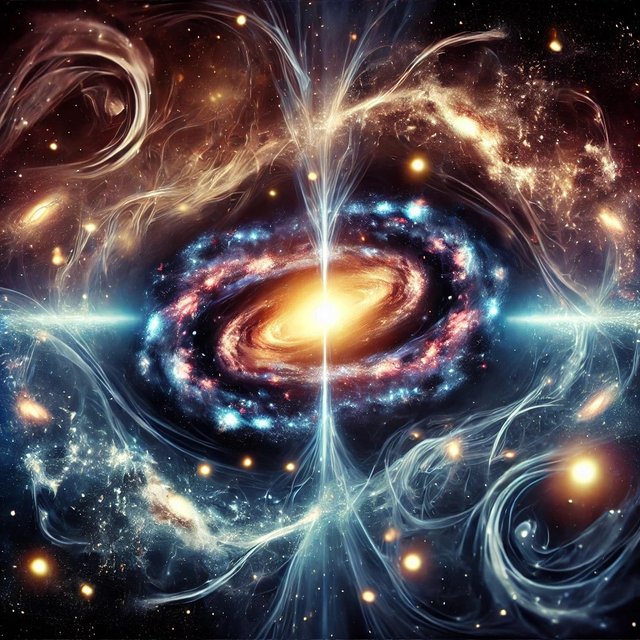Dark Matter and Dark Energy: What We Don’t Know About the Cosmos

What is Dark Matter?
Dark matter is a mysterious substance that makes up about 27% of the universe. It doesn’t emit, absorb, or reflect light, making it invisible to us. Scientists can’t see dark matter directly, but they know it exists because of its effects on gravity. For example, galaxies spin faster than they should, and dark matter’s presence explains this strange behavior.
How Do We Know Dark Matter Exists?
Scientists detect dark matter by observing how it affects other objects in space. Here are some ways it shows itself:
- Gravitational Lensing: Light bends when it passes near massive objects. Dark matter’s gravity can bend light from distant stars and galaxies, even though we can’t see the matter itself.
- Galaxy Movements: Without dark matter, galaxies would fly apart because their visible mass isn’t enough to hold them together.
- Cosmic Microwave Background: Tiny differences in the universe's early radiation suggest the influence of dark matter.
What is Dark Energy?
Dark energy is even more mysterious than dark matter. It’s a force that makes the universe expand faster and faster. Dark energy accounts for about 68% of the universe, meaning most of the cosmos is something we barely understand. Unlike gravity, which pulls things together, dark energy pushes them apart.
How Does Dark Energy Work?
Scientists believe dark energy is responsible for the universe's accelerated expansion. In 1998, astronomers studying distant supernovae discovered that galaxies are moving away from each other faster than expected. This surprising find suggested that some unknown force—dark energy—was at work.
Differences Between Dark Matter and Dark Energy
Dark matter and dark energy are not the same, even though they both remain mysterious. Here’s a quick comparison:
- Dark Matter: Invisible substance holding galaxies together with its gravity.
- Dark Energy: A force causing the universe to expand more quickly.
Together, they make up 95% of the universe. Only about 5% is made of ordinary matter—the stuff we see, like stars and planets.
Why Are They Important?
Dark matter and dark energy are crucial to understanding the universe. Without them:
- Galaxies wouldn’t form or stay together.
- The universe’s expansion wouldn’t make sense.
Studying these phenomena helps scientists uncover the secrets of the cosmos and how it all began.
Challenges in Studying Dark Matter and Dark Energy
Understanding dark matter and dark energy is extremely challenging:
- Invisible Nature: They don’t emit light or energy, so they can’t be directly observed.
- Complex Physics: Scientists need advanced technology and theories to study them.
- Unknown Composition: We don’t know what dark matter and dark energy are made of.
Despite these challenges, scientists are making progress with experiments and advanced telescopes.
Quick Facts About Dark Matter and Dark Energy
- Together, they make up 95% of the universe.
- Dark matter acts like an invisible glue, while dark energy pushes the universe apart.
- Ordinary matter—what we see—makes up only 5% of the universe.
Conclusion
Dark matter and dark energy are two of the biggest mysteries in the cosmos. They shape the universe and drive its expansion, yet we know very little about them. As technology improves, scientists hope to uncover more secrets about these invisible forces, bringing us closer to understanding the universe.
Upvoted! Thank you for supporting witness @jswit.